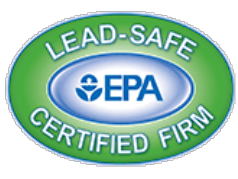It’s normal for people to mistake attic insulation for air sealing and vice versa. While they may seem to provide the same level of heat and cooling protection, one is most certainly better than the other. In this guide, we’ll explore the nuances of attic insulation vs. air sealing so you can determine the most suitable option for your home.
What is attic insulation?
The primary purpose of attic insulation is to maintain a desired temperature inside your home by reducing heat transfer between the living space below and the attic space above. It creates a thermal barrier between your home and the external environment.
Quality attic insulation can effectively block extra heat from entering your home during summer and regulate your home’s temperature. The same goes for the winter season. Adequately insulated attics will keep the cold from bothering your home.
The different types of attic insulation
Not all houses are built the same, nor are the materials used for attic insulation. Some types of insulation, like fiberglass, are considerably more eco-friendly. There’s also a type of insulation called spray foam insulation that can add stability to your ceiling since it thickens after spraying. Here are some of the other types of insulation:
- Fiberglass batts
They may look like giant rolls of cotton, but fiberglass batts are pre-cut flat pieces of fiberized glass spun into long blankets. These are considered to be one of the most inexpensive types of attic insulation.
- Blown-in fiberglass
While blown-in fiberglass contains similar components to fiberglass batts, they differ in distribution methods. It’s blown through a machine rather than being cut into pieces, so it’s also more cost-effective than other insulation types.
- Cellulose
Unlike the other insulation types mentioned above, cellulose insulation is typically made from shredded newspaper. It’s an inexpensive option for regulating your home’s temperature, but it can wear down from prolonged exposure to humidity.
- Spray Foam
Out of all types of insulation, spray foam provides the best airtight seal for your attic. It may come with a higher price tag, but the heating and cooling protection it delivers is worth every penny when it comes to keeping your space at the ideal temperature.
Now that you know what attic insulation is and are informed about its types, it’s time to learn more about air sealing and why most home improvement experts like WMGB recommend this specific attic heating and cooling protection to homeowners.
What is attic air sealing?
Air sealing is what safeguards your house from skyrocketing energy bills. The truth is, no matter how well-installed your attic is, that alone won’t stop heat from leaking through small gaps in your walls or flooring.
Tracking down the source of your air sealing problem
If you’ve recently insulated your attic and you’re still receiving high energy bills, there might be unfilled gaps in your attic that need urgent attention. You should consider talking to an air sealing specialist who can inspect your home and provide a long-term solution.
Several tests can be performed to determine whether your home needs air sealing. Here’s a list of methods you can try on your own:
- Visual inspection
The easiest way of telling whether your home needs sealing is if there are visible holes or gaps in your attic walls and flooring.
- Light test
Some gaps in your home may be too small for your eyes to spot. Conducting a light inspection with a torch can catch what you’ve missed during your visual test.
- Paper test
This method can be done by closing the windows and door of your attic with a piece of paper jammed between the hinges. If you can pull the paper without rips, then you need immediate air sealing.
- Smoke test
A smoke test is another effective way of tracing gaps and holes in your attic. You can do this by lighting incense in your attic and leaving it for a few minutes. If you see smoke coming out of the room, then urgent air sealing is necessary.
Attic insulation vs. air sealing — which is better for your home?
When it comes to insulation vs. air sealing, both methods can greatly reduce your electric costs, as well as maintain the desired temperature in your home during the cold and hot seasons. However, it’s important to keep in mind that insulations may not be able to cover up tiny gaps and holes in your attic flooring and walls.
So, to get the best out of your attic insulations, you should always air seal your attic. That way, you can ensure that your home receives the best heating and cooling efficiency possible to lower your energy cost-effectively.
Work with the best attic insulation and air sealing experts in West Michigan
Whether you need to update your attic insulation or urgently need air sealing, WMGB Home Improvement is the specialist you need. We have more than three decades of experience making homes a comfier place to live in, so you can rely on our expertise and service.
Aside from air-sealing attic insulation, we also carry out a comprehensive crawl space encapsulation service, so reach out to us today for a free quote!







